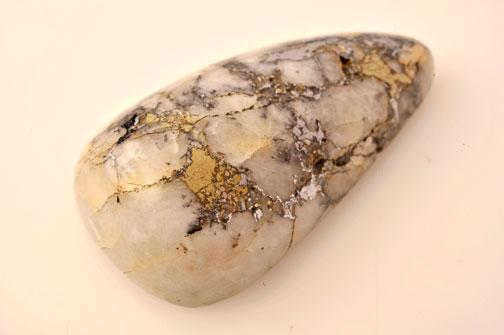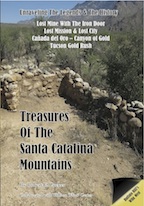Tucson, Arizona's "modern" history,
as we know it, began hundreds of years ago, although humans have been
continuously living in the Tucson-area for possibly 15,000 years.
This section of the Tucson
Entertainment Magazine explores the many stories that were left behind
about the history of Tucson. Read from chapters of historic books on
Tucson and download free PDF samples of some current books on Tucson's
history.
The Hohokam, O'odham, Sobaipuri tribes lived throughout the
Tucson basin for centuries. They roamed from the Santa Cruz River to the
Canada del Oro to the Rillito Rivers depending on the seasons and
available water. Even though they fought with neighboring tribes, when
the Spanish first trekked through in the 1550s, they had no idea of the
changes that would come from these outsiders visits and eventual
conquest.
Tucson in the 1600s remained relatively serene until the end of
the century when a new wave of Spanish infiltration began with the
journeys of Father Eusebio Kino. The Tucson of the 1700s was shaped by
the efforts of the Jesuits and the Spanish military to exploit mineral
and human resources as they settled the Tucson valley. The Royal Spanish
Presidio of San Augustin del Tucson was established on August 20, 1775.
Each year, Los Decendientes del Presidio de Tucson, Los
Cascarones, and other local organizations host events to celebrate
Tucson's official birthdate in 1775. The annual Tucson birthday celebration
is held the 3rd week of every August. This special event recognizes the
five different flags that have flown over the city of Tucson since its
founding in 1775.
San Xavier mission
plays a large role in the establishment of Tucson's long history. Other
evidence proves humans have inhabited the Tucson area for tens of
thousands of years.
Tucson's other early mission- Mission Santa Catalina de Cuitakbagu.
Somewhere near the the Cañada del Oro, north of Tucson, Arizona, there
may have been another early Jesuit mission called the “Mission of Santa
Catalina (Catarina).” There is a legend of a lost mission in the Santa
Catalina mountains that was destroyed by Apache Indians.
The Tucson Gold Rush
Tucson has been experiencing a gold rush for hundreds of years. A new book in preparation explores the exciting Tucson Gold Rush
period of the 1880s. After the Gadsden Purchase, Americans began to
flood the Southwest United States in search of gold, silver and copper.
In the 1880s, numerous mining claims were staked throughout the
Catalinas, many reclaiming old abandoned Spanish and Mexico diggings.
Many of the claims were owned by prominent Tucson businessmen who spent
their weekends scouring the nearby mountains for precious minerals.
 All of these stories takes place in the Santa Catalina Mountains. Just below Mt. Lemmon lies one of the great stories of the search for gold in the mountains- the lost city and the lost Iron Door mine.
All of these stories takes place in the Santa Catalina Mountains. Just below Mt. Lemmon lies one of the great stories of the search for gold in the mountains- the lost city and the lost Iron Door mine.
As several missions were established in the valley
near the Santa Cruz river, some reports included mining operations by
the Jesuits deep inside of the Catalina Mountains.
Explore the historical records that account for that
thousands of pounds of gold, silver and gold-in-quartz that has been
extracted from the Santa Catalina Mountains.
Mining in the Catalina Mountains
The Santa Catalina Mountains
became valued for its copper and other precious metals in the late
1800s through the mid 1940s. This period of mining brought thousands of
people to live and work throughout the Catalina Mountains from Mt. Lemmon to Oracle. Such notables as W.F. "Buffalo Bill" Cody owned extensive mining claims in the back hills.
The Mine with the Iron Door
is the legend of the lost Escalante mine that supposedly contains gold
mined by the Pima Indians under the Jesuits occupancy. The Iron Door
Mine was sealed up and its location is lost on history. But, the mine
legend is still alive.
Find out about more historical dates leading up to Tucson's establishment.
Tucson's History Archives - Download PDFs
As a special feature, we uncovered
several out of print books about Tucson written at the beginning of the
1900's. These books are now in the public domain and can be read online
or downloaded for free.
- Treasures of the Santa Catalina Mountains
is one of the most comprehensive books written on the legends and
history of the Catalina mountains, north of Tucson. Learn about the Iron
Door mIne, Buffalo Bill Cody's mining interest in the Catalinas and how
the lure of gold brought prospectors to the Cañada del Oro– the Canyon
of Gold. The story of the the lost mine, the lost city and the lost
mission. Download a free PDF sample of the book.
- Old Tucson; a hop, skip and jump history from 1539 Indian settlement to new and greater Tucson"
by Estelle M. Buehman describes early Tucson history. She shares her
accounts of the Old Pueblo when it was still a small town in the early
1911. Her book covewrs the history, dates and names of people who helped
shape the emergence of Tucson. Read about the early pioneers, the
establishment of schools, newspapers, churches, business and the lives
of local Tucsonans in the 1800's in Buehman's "Old Tucson." Purchase
from Amazon: Old Tucson; a hop, skip and jump history from 1539 Indian settlement to new and greater Tucson.
 This is an EXACT reproduction of a book published before 1923.
This is an EXACT reproduction of a book published before 1923.
- "Tucson, Arizona"
by Rochester Ford Issued by the Tucson, Arizona Chamber of Commerce and
reprinted from "OUT WEST MAGAZINE" for September, 1902. Tucson lays
claim to being one of the oldest settlements in the United States,
ranking as to age next after San Augustine, Florida, and Santa Fe, New
Mexico. Its history can be traced back to 1649, when a military station
was established by the Spaniards to protect the Mission of San Xavier.
-
Memoirs of Pimerîa Alta
is Father Eusebio Francisco Kino's historical memoir of Pimerîa Alta.
This is a contemporary account of the beginnings of Arizona, California
and Sonora first published in 1919. It is out of copyright and can be
freely downloaded as a PDF.
Local Tucson History Books
These books on Tucson history and legends
are written by local author and publisher Robert Zucker. These books
are available on Amazon.com. Read and download free sample chapters.
 Treasures of the Santa Catalina Mountains
is one of the most comprehensive books written on the legends and
history of the Catalina mountains, north of Tucson. Learn about the Iron
Door mIne, Buffalo Bill Cody's mining interest in the Catalinas and how
the lure of gold brought prospectors to the Cañada del Oro– the Canyon
of Gold. The story of the the lost mine, the lost city and the lost
mission. Download a free PDF sample of the book.
Treasures of the Santa Catalina Mountains
is one of the most comprehensive books written on the legends and
history of the Catalina mountains, north of Tucson. Learn about the Iron
Door mIne, Buffalo Bill Cody's mining interest in the Catalinas and how
the lure of gold brought prospectors to the Cañada del Oro– the Canyon
of Gold. The story of the the lost mine, the lost city and the lost
mission. Download a free PDF sample of the book.
Entertaining Tucson Across the Decades
is a collection of interviews with hundreds of local musicians,
newspaper articles and original photographs covering 50 years of Tucson
music and arts entertainment from 1950-1999. Read chapters and download a
free PDF from the book.
Tucson Gold Rush 1880
explores the period when local businessmen explored the nearby
mountains in search of gold, silver and copper. Profiles on local
pioneers and their stories about prospecting the Tucson mountains.
© 2011-2023 EMOL.org / Entertainment Magazine On Line. All rights reserved.


